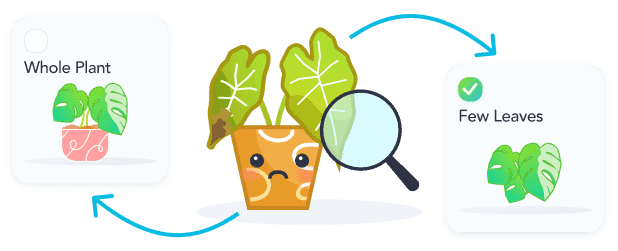Every 14d
Recommended Frequency
1 /2 cup of water
Recommended Amount
The African Milk Tree is a type of succulent that can survive with minimal watering. It is best to soak the plant and allow water to completely drain. Allowing the soil to completely dry before watering will help prevent...
Every 30d
Recommended Frequency
Fertilize your African Milk Tree once a month during spring and summer using a liquid fertilizer diluted by half.
Indirect Sun
Recommended
Indirect Sun or Filtered Sun is when sun exposure is being filtered through a sheer curtain or is not able to have the sun's rays directly hit the leaves/flowers of your plant.
Every 730d
Recommended Frequency
Repot your African Milk Tree every two years, or once it outgrows its pot.
Sandy Soil
Recommended Soil
Peat Soil is an acidic soil that retains a lot of moisture and slows decomposition. Due to such a high moisture retention this mix may require irrigation to help with draining. This soil type is best used when paired wit...
The African Milk Tree (Euphorbia trigona) thrives in environments with humidity levels around 40-60%, which is considered average to high. This succulent plant prefers a bit more moisture in the air than some other succu...

Shop African Milk Tree
Questions about African Milk Tree
The African Milk Tree (Euphorbia trigona) is a striking, easy-to-care-for succulent plant native to Central Africa. It's known for its vertical, branching growth and resembles a cactus with ridged, green stems edged in t...

Toxicity of African Milk Tree

Common Pests and Diseases
Wilting and Drooping
Underwatering
The African Milk Tree, while drought-tolerant, can suffer from wilting and drooping due to insufficient watering. To remedy this, establish a regular watering schedule, allowing the soil to dry out slightly between waterings. During the growing season, water the plant thoroughly when the top inch of soil feels dry to the touch. Reduce watering in the winter to prevent root rot. If the plant has begun to wilt, water it slowly and deeply to revive it.
Mealybugs Infestation
Mealybugs are small, soft-bodied insects covered with a white, waxy substance. They typically infest the crevices and undersides of the African milk tree's leaves, sucking the sap and weakening the plant.
To combat mealybugs, start by isolating the affected plant to prevent the spread to others. Use a cotton swab dipped in rubbing alcohol to dab directly onto the pests, effectively killing them without harming the plant. For more severe infestations, rinse the plant with a strong stream of water to dislodge the pests, or apply insecticidal soap or neem oil, following the product's instructions carefully. Regularly inspect your plant for early signs of infestation to manage pests more effectively.
Fungal Leaf Spot
Caused by various fungi, often due to high humidity and poor air circulation around the plant.
To manage fungal leaf spot, start by removing and destroying any affected leaves to prevent the spread of the fungus. Improve air circulation around your African Milk Tree by spacing plants properly and avoiding overcrowding. Ensure the plant is in a well-ventilated area. If necessary, apply a fungicide specifically designed for fungal leaf spots, following the manufacturer's instructions carefully. Prevent future outbreaks by avoiding wetting the leaves when watering and maintaining moderate humidity levels.

Related Plants
Other Articles:
Top 10 Most Popular Roses
Mar 22, 2022
How to Care for China Roses
Mar 11, 2022
How to Care for Chinese Money Plants
May 15, 2020
How to Grow and Care for A Bird of Paradise
Apr 26, 2020
Top 10 Plants To Grow In A Terrarium
May 31, 2022
How to Grow and Care for Lucky Bamboo
Mar 29, 2022
How to Grow and Care for Corn Plants
Mar 29, 2022
How to Care for Madagascar Dragon Trees
Mar 21, 2022



